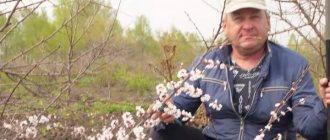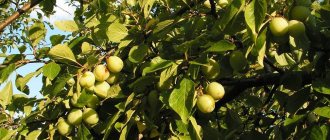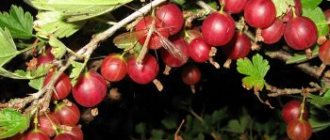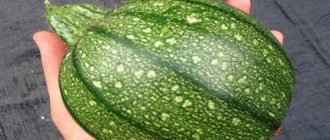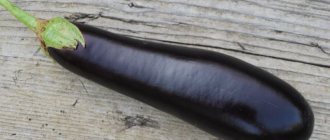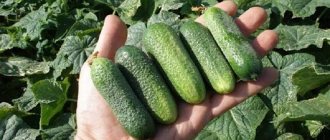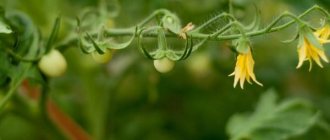History of growing thornless blackberries
In the USA, the first varieties of blackberries appeared in the 19th century. And it is there, and also in Mexico, that this berry crop is grown on an industrial scale. In our country, cultivating blackberries is not considered the easiest process. Only private and small farms are interested in the berry. Even in the southern regions of the country there are still no industrial crop plantations.
Blackberries belong to the genus Rubus of the Rosaceae family. The culture is closely related to raspberries, which have long and firmly taken root in our areas. Externally, thornless blackberry looks like a picturesque shrub with pubescent leaves divided into three lobes. White, whitish-pink, white-lilac flowers bloom in mid-June. In their place, greenish fruits are then set. Ripe berries are usually black in color. Compared to raspberries, blackberries tolerate transportation better.
The roots of the crop can grow up to 1.5 m deep into the soil, where they are saturated with moisture without any problems. The plant survives periods of severe drought without difficulty.
Blackberries do not ripen at the same time, so you can see fruits of different colors on the bushes
Thornless blackberry varieties
Despite its low prevalence in our country, interest among domestic fruit growers in growing blackberries (including non-thorny representatives) is noticeably increasing. Some varieties and their hybrids have long been tested for survival in our climate. They feel comfortable in harsh conditions with short summers and prolonged cold. These include varieties bred by American or British scientists.
Thornfree
The variety was obtained in 1966 in the States. A strong subshrub forms multiple semi-creeping shoots up to 4 m long. During the flowering phase, the bush enchants with the beauty of its pinkish flowers. In August, purple-black oblong berries ripen with an average weight of 5 g with a sweet and sour taste. It is not recommended to keep them on the branches, since overripe fruits lose their taste, elasticity and shape, and become unsuitable for transportation. Productivity: 20–25 kg per plant. Thornfree is able to withstand cold temperatures down to -20°C.
Read more about the variety in our article - Thornfree Blackberry: description of the variety, reviews, features of planting and cultivation.
The Thornfree variety weighs 5 g of ripe berries
Polar
A Polish variety of upright growing. White flowers form on the plants, giving way to large, round-shaped fruits with a slight sourness and pronounced aroma. The fruits are hard, so the variety is suitable for mechanized harvesting and industrial cultivation. The fruits appear from mid-July, but you can taste them no earlier than September. The variety has a good frost resistance - down to -25–300C.
Polar is the best winter-hardy variety with large fruits
Loch Ness
The variety was bred by Scottish scientists in 1988. It gained popularity due to its rather large berries with excellent transportability. The yield of one bush is 18–23 kg.
The Loch Ness variety is valued for its large fruits
Loch Tay
An early variety of thornless blackberry, bred in England. The branches on the tall (3–4.5 m) plant are semi-erect. The dense berry of Loch Tay is large (5–12 g) and sweet. The yield is high - 20–30 kg per bush. The variety is not frost-resistant; it is recommended to cover the shoots at the end of September.
The blackberry variety Loch Tay is not frost-resistant
Black Satin
The shoots of the plant are powerful, up to 5–7 m. The branches initially stretch upward (up to 1.5 m), and then take a horizontal position. You can try the black berries of Black Satin in the second half of August. They are tasty, have tender flesh, which is why they do not tolerate transportation. It is possible to collect up to 20–25 kg of fruit from one plant. Black Satin shoots need to be covered for the winter.
Black Satin's fruits ripen in the second half of August
Apache
A variety with vertically growing stems, created by American botanists. The average weight of sweet, conical berries is 4–9 g. The fruits do not wrinkle during transportation. Winter hardiness - down to -200C; it is necessary to cover the stems before wintering.
Apache blackberry fruits tolerate transportation well
Thornless Evergreen
It is one of the frost-resistant varieties and can tolerate cold temperatures down to -300C. The bushes do not shed their leaves before wintering. They have powerful stems that bend to the ground. The average yield of the variety is 10 kg per bush, fruiting is intense. The berries are small (3 g), and the bush is literally sprinkled with them. Glossy, sour-sweet fruits ripen from the second half of August until the end of September. The berries have large seeds. In the climate of central Russia, it is recommended to cover plants for the winter by laying the branches on the ground and covering them with covering material.
Although the Thornless Evergreen variety is frost-resistant, the shoots still need to be covered for the winter
Navajo
The bushes of the variety are upright, reaching a height of 2 m. At the end of August - beginning of September, fragrant glossy berries ripen. Fruits with a mild taste, without the astringency typical of blackberries. They are not record-breaking in size and weigh about 4–7 g. But they have a uniform shape and size, and are well stored and transported. Winter hardiness of Navajo is down to -200C. In terms of cultivation, it is considered one of the unpretentious varieties.
Read more about the variety in our article: Growing Navajo blackberries in the garden.
Navajo is one of the most unpretentious blackberry varieties
Chester Thornless
Chester Thornless is an American variety with semi-creeping or semi-erect growing branches. In June they bear pinkish flowers, and in August they are replaced by dark berries with a cherry or plum flavor. The yield is 18–22 kg per bush. The frost resistance of Chester Thornless is worthy of praise: the plants calmly survive frosts down to -30°C. But it is still necessary to insulate them for the winter. It is not recommended to plant plants in very wet and shaded areas.
Read more about the variety in our article: Chester blackberry is a frost-resistant thornless variety.
Chester Thornless - an American variety
Triple Crown
Translated into Russian, the name of the variety sounds like “Triple Crown”. The stems of Triple Crown are semi-creeping. One plant can produce a harvest of up to 15 kg. Bushes are formed due to the rapid growth of powerful thornless stems, the length of which reaches 2 m or more. The black fruits are large - weigh up to 8 g, have a cherry aroma (some taste notes of plum or cherry). Berry picking occurs in August-September. Three undoubted advantages distinguish this variety of blackberries: intensive growth of shoots, distinctive taste of the fruits, their juiciness and at the same time density (which has a beneficial effect on transportation). Triple Crown does not shine with special frost resistance - it is necessary to protect the shoots from frost before wintering.
Triple Crown blackberries are juicy and dense
Natchez
The Natchez was developed in the United States. It is characterized by large black berries of an elongated shape, weighing about 12–16 g. Large drupes resemble eggs. The berries are very sweet and have a moderately dense structure. Strong stems (up to 6 m long) grow vertically with a subsequent downward slope. Fruit formation lasts from July to mid-August. Productivity per plant is 13–15 kg. The variety is ideal for amateur breeding.
The Natchez variety has very large berries.
Each variety of thornless blackberry has its own pros and cons. However, advanced gardeners in central Russia often choose varieties such as Thornfree, Chester Thornless, Polar, Loch Ness, and Natchez.
Landing Features
Indispensable conditions for crop growth are soil nutrition and the required amount of sunlight. The soil for planting is alkaline, it can be loam with a predominance of humus. They begin to prepare a place for thornless blackberries in the fall. To do this, the soil is dug up, the roots of weeds are removed, and it is enriched with humus or compost, ash or dolomite flour. However, the planting of seedlings is always planned for spring, when the plant can take root better and begin to grow.
The landing procedure itself proceeds according to the following scheme:
- Dig holes 0.5 m deep. They are made approximately 2 weeks before planting.
- The holes are filled with compost or humus, wood ash.
- A seedling is placed in the hole and the roots are covered with soil.
- Water the ground around the plant, pouring at least half a bucket under one bush.
- The trunk circles are sprinkled with mulch, the branches are cut to 4–5 cm.
- When planting, gaps are maintained between seedlings, the size of which is determined by the varieties of blackberry bushes (1–2 m). There should be 2 m between rows.
Video: planting thornless blackberries
Recent Entries
Lilac perennials that are beautiful, compact and do not crowd out other plants Why when buying seedlings you should not take the sellers’ word for it and how to determine the age of the plant using 3 signs Tomato seedlings have turned purple or whitish: why the color has changed and how to save the plants
Post-landing work
Caring for a plant involves performing step-by-step measures:
- Clothing for caring for the plant should be as tight as possible. Blackberries with thorns will bring a lot of unpleasant sensations when working without gloves.
- At the end of spring or beginning of summer, it is important to properly trim the bush. Young canes are fixed on one side, fruiting ones on the other.
- Caring for blackberries involves getting rid of weeds.
- Controlling humidity levels is an extremely important aspect of a healthy plant.
- Seasonal feeding will help improve the formation of green mass and stimulate the formation of a large number of berries. In spring, organic additives are added to the soil. In autumn it is recommended to add potassium.
Proper planting of blackberries
Timely fertilization of the soil will allow the plant not only to withstand winter frosts more steadfastly, but also to significantly increase the fruiting period.
Garden blackberry is a very picky plant. Reproduction and planting of the crop will not cause any problems even for an inexperienced summer resident. Choosing high-quality planting material will ensure a large harvest and a minimum of problems. Compliance with the rules of agricultural technology and care will also lead to a positive result. It is important not to skimp on fertilizers, without which not a single plant can exist normally.
Trimming
The fruits of thornless blackberries, like raspberries, are formed on side branches of last year's shoots. During the season, the plant forms replacement shoots, which will bear fruit only next summer. Blackberry bushes need supports, which are poles with wire stretched between them.
The distance between adjacent pillars is 3 m. The wire is pulled in 4–5 rows, leaving 30 cm between them. The first row is raised above ground level by 45 cm.
Blackberry shoots are fixed between rows of wire
When pruning blackberries, gardeners recommend adhering to the following rules:
- Sanitary pruning of bushes is carried out in the spring. Even before the buds swell, dry branches that have not weathered the winter well are removed. The frozen tops of the shoots are cut off to a living bud. Pruning for preventive purposes is carried out for all plants on the site - both young and adult plants.
- Pruning of bushes in the first year of life is carried out twice: in spring (in May) and in summer (in July). Spring pruning is carried out on new side shoots in order to stimulate their growth. The branches are shortened by 5–7 cm. Summer pruning is designed to shorten shoots whose length exceeds 0.5 m. The branches are pruned by 7–10 cm. Pinched tops allow the branches to develop in thickness, which has a beneficial effect on the number of flowers and the future harvest as a whole. On young bushes, in the summer, all newly formed branches on the sides are eliminated, leaving only 6–8 of the largest ones.
Blackberries are pruned twice per season: in spring and mid-summer.
- For bushes that are more than 2 years old, all dead branches are removed in the spring, keeping 4–10 strong ones. The shoots are trimmed from the sides by 20–40 cm, providing for the presence of 8 to 10 live buds on them. During the summer season, all newly emerging shoots are picked from the roots. Only spring ones are preserved, which will become fruitful next year. The branches of the current season are shortened to a length of 1.6–2 m. If the number of branches of the current year is small, healthy shoots are left, shortening the lateral ones by 2 cm. Fruit-bearing bushes are cleared of branches weakened and affected by pests and diseases. They are replaced by young shoots.
Video: how to properly prune blackberries
Caring for bushes and preparing for winter
To grow a beautiful blackberry at home, you will need some simple care, including: fertilizing the soil, watering, staking, thinning, and creating a support.
Every year, with the arrival of warm spring days, it is recommended to fertilize the ground around the bush with humus (1/2 bucket) or saltpeter (50-60 grams), digging up everything with soil. In autumn, you can add about 100 grams of ash to the soil. on the bush.
After rain, it is recommended to loosen the soil around the bush and remove weeds, thereby enriching the roots with oxygen. But this should be done only with young shoots - in adult plants there is a high probability of damaging the root system, which will negatively affect their growth.
Particular attention should be paid to soil moisture in June, as well as September and October; watering is required at least once a week at the rate of about 5 liters of water per bush. At other times of the year, blackberries of the thornless variety can do just fine without moisture.
Crop varieties that grow upward require minimal care, but semi-cresting and climbing plants will require the creation of additional supports, which you can make yourself using pegs and wire of about 4-5 meters (the wire is stretched between the pegs in 3 rows) or factory-made trellises. It is recommended to tie fruiting shoots as high as possible, and young shoots to be fixed to the lower tier of the trellis.
Garter on a trellis of thornless blackberries
To increase productivity, it is recommended to cut off young shoots whose height has reached 120 cm. The tops are pinched at about 20-25 cm. The procedure is best carried out in early May, as well as in early spring. In the autumn, after harvesting, all fruit-bearing branches are carefully cut off.
You need to care for the plant almost throughout the year. Preparation for the winter period is no exception.
Uncovered thornless blackberries do not require special preparation for winter. These varieties include remontant crops growing in the form of shrubs.
Preparing blackberry shoots for wintering
The exception is for crops that do not tolerate cold well. In this case, young shoots need to be bent to the ground and carefully covered with any white non-woven covering material (spunbond, agrofibre, agrospan). The density of the material directly depends on winter temperatures: it can be grade 60, 80, 100 or more. Thus, the Chester variety is famous for its abundant harvest, but is afraid of winter frosts and requires additional care. If you cover it with agrofibre, the plant can easily withstand frosts above 20 degrees.
Thornless blackberries
Today, amateur gardeners grow a variety of blackberry varieties. When choosing a type of blackberry, it is worth taking into account the peculiarities of climatic conditions; this factor affects the yield of the plant. In addition, it is not enough to simply plant blackberries - they require certain care and preparation for wintering. Only following all the recommendations of the breeders will allow you to achieve a good harvest in a year or two.
Growing thornless blackberries in the Moscow region
Among gardeners in the Moscow region, thornless blackberry varieties such as Thornfree, Loch Ness, and Thornless Evergreen are held in special esteem. Their degree of resistance to Russian winter is average and above average. In the Moscow region, during winter, fairly low temperatures are observed (on average down to -11°C, but almost every year there are frosts - down to -30°C). This negatively affects the condition of the plants with the arrival of spring and the future harvest. Despite good winter hardiness, these varieties require shelter at the end of autumn.
Video: growing thornless blackberries in the Moscow region
Pests and diseases: precautions
Blackberries and raspberries have the same pests, since the plants are relatives. Blackberry plantations are affected by the raspberry weevil, stem fly, and raspberry beetle. They fight parasites by spraying with insecticidal agents. Infusions of tobacco, celandine, and tansy help get rid of them.
Fungal diseases affect crops during wet and cool periods of the growing season. The disease can be identified by brownish and whitish coatings on the leaves and stems. If signs of pathology are detected, the affected parts are cut out, and the bushes are treated three times with Bordeaux mixture with a break of 10 days.

